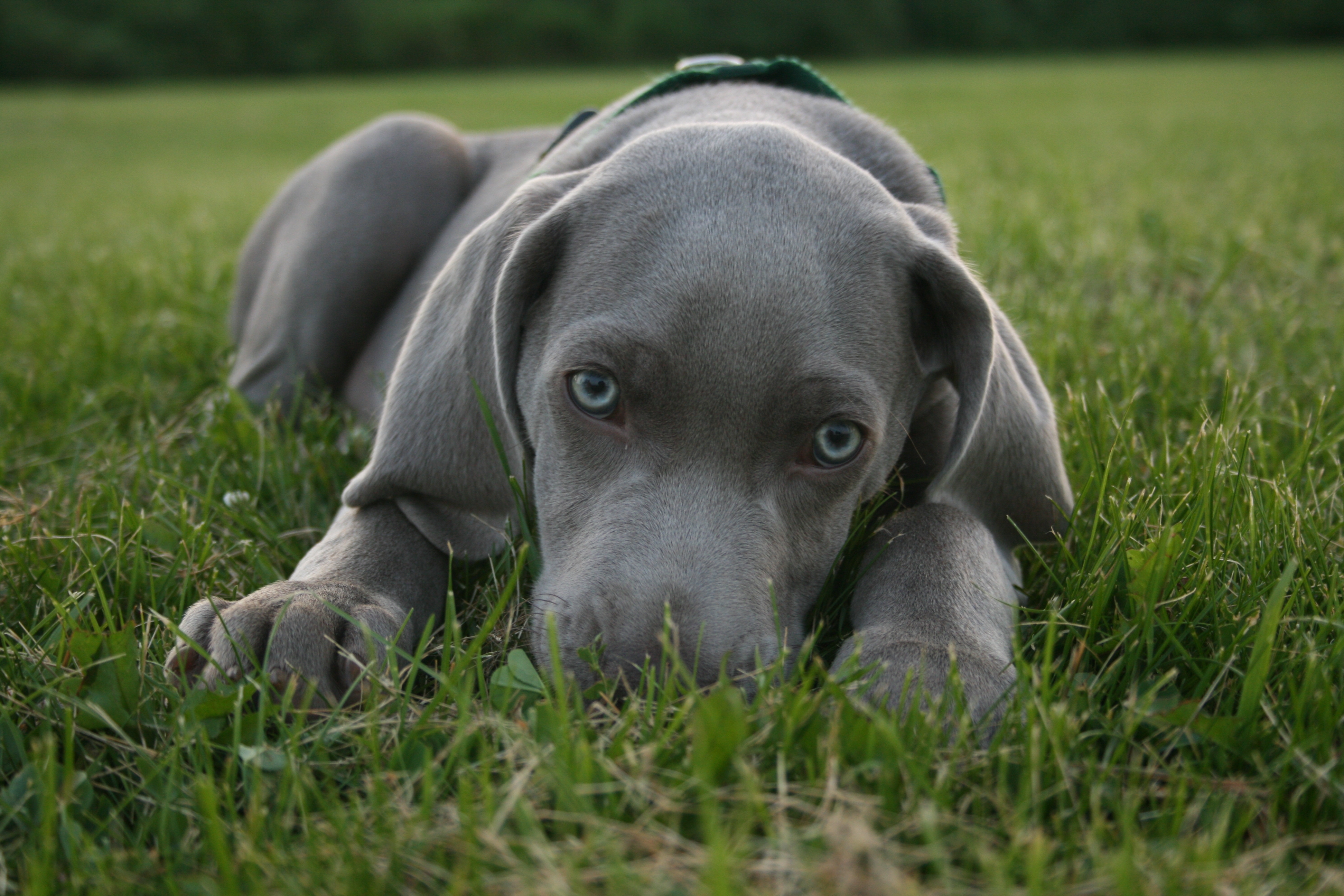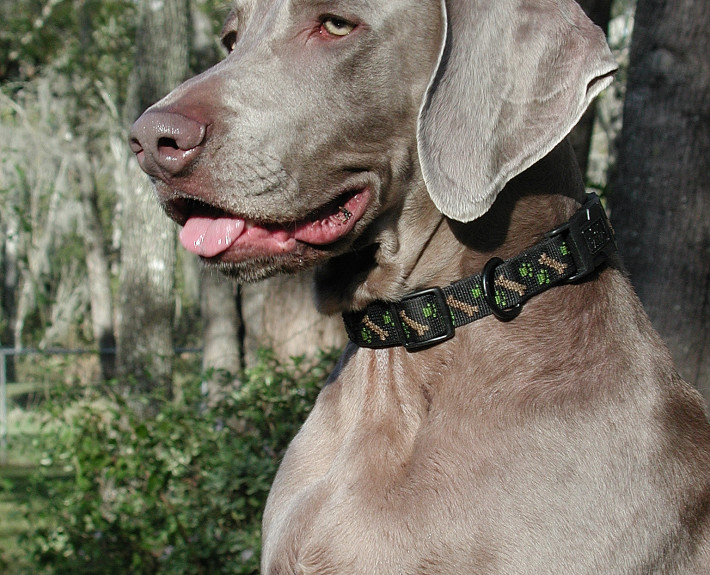What makes the Weimaraner Unique?
This large sporting breed was designed in Germany as a companion and as hunting dogs for members of the nobility. Members of this intelligent and highly trainable breed make good pets for active outdoor enthusiasts.
Breed Groups
Page Contents

Is the Weimaraner Right For You?
These large, friendly dogs can be quite rambunctious and may unintentionally injure those who happen to be playing with them. Members of this breed need plenty of exercise on a regular basis. If not given appropriate amounts of playtime and space to run, these dogs can be quite destructive. Although they can be stubborn at the best of times, not allowing Weimaraners to run and play is a recipe for disaster.
These dogs should also be supervised when playing outdoors as they have been known to escape from various types of enclosures. Some have even been known to unlatch gates.
In 5 Words
- Steady
- Fast
- Aloof
- Energetic
- Stubborn
Characteristics
Learn About the Weimaraner
Description
General Description
The original purpose of these large dogs was to hunt and their build reflects that fact. Weimaraners are speedy, graceful dogs with plenty of stamina and endurance. These dogs possess an athletic build and have a sloping back. They also have a medium-sized head and teeth that meet in a scissors bite. Weimaraners additionally possess long, drooping ears that hang close to their heads. They also have straight front legs and webbed feet with gray or amber colored toenails. These dogs have wide-set eyes that are typically amber, blue-gray, or gray in color and often contain a kind expression. Gray noses are another feature of this breed. In places where docking is not illegal, these dogs will have their tails cropped to about 4 centimeters (1.5 inches) long when they are a few days old. The dewclaws are also generally removed.
Size
Male dogs weigh between 55 and 70 pounds (25 and 32 kilograms). Female Weimaraners weigh between 50 and 65 pounds (23 and 29 kilograms). The males of this breed stand about 24 to 27 inches (61 to 69 centimeters) tall while their female contemporaries stand between 22 and 25 inches (56 to 63 centimeters) high. According to the American Kennel Club standards, Weimaraners can be an inch (2.5 centimeters) shorter or taller than the breed standard calls for but this is a fault that will be greatly penalized in the show ring.
Coat
These dogs have a short, glossy coat that fits tightly against their bodies. Although Weimaraners are widely known for their unusual gray fur, they do come in other colors. Other acceptable hues for these dogs include blue, tan, and brown. White markings may also be present on a dog’s chest. A long haired variety is also available.
Short History of the Weimaraner
During the 1800s, Weimaraners first came into being but they were originally known as the Weimar Pointer. These dogs were bred so that they could successfully hunt various sized game ranging from wildcats to birds. A variety of breeds were used in their creation including the Bloodhound, the Red Schweisshund, the Great Dane, and the German Shorthair Pointer as well as other pointer types. The breeding of these dogs was closely controlled by the German Weimaraner Club until around 1929 when dogs began being sold to people who didn’t belong to the organization. The dogs made their way to America shortly thereafter, but in the hands of a club member. In 1943, the breed was officially recognized by the American Kennel Club where it is more popular in the show rings than it is in its native Germany.
Temperament
Although they are loyal companions that will shadow their owners anywhere they go and they are great at dealing with the antics of youngsters, Weimaraners are not recommended for families with small children. These large, friendly dogs can be quite rambunctious and may unintentionally injure those who happen to be playing with them. Members of this breed need plenty of exercise on a regular basis. If not given appropriate amounts of playtime and space to run, these dogs can be quite destructive. Although they can be stubborn at the best of times, not allowing Weimaraners to run and play is a recipe for disaster. Members of this breed do best with a large, fenced in yard where they can play during the daytime and a family that doesn’t mind them sleeping inside most of the time. These dogs are particularly prone to separation anxiety and are not recommended for owners that spend a lot of time away from home.
Caring for Your Weimaraner
General Health
Born in litters of about 7 puppies, these dogs tend to live between 10 and 12 years. However, there are a number of conditions that may arise from time to time. Gastric torsion, or bloat, can be especially problematic in members of this breed. Therefore, these dogs should be fed twice a day rather than all at once. It is also a good idea to put food on a raised platform so that they do not eat too quickly. Weimaraners should eat after they have been walked rather than the other way around
Skin allergies can cause Weimaraners to scratch obsessively, lose their hair, or fall prey to rashes. However, some dogs are simply allergic to the bites of common parasites and this condition can sometimes mimic allergies Other health issues include cryptorchidism, elbow dysplasia, distichiasis, Von Willebrands Disease, entropion, hypothyroidism, hypertrophic osteodystrophy, pituitary dwarfism, hypomyelinogenesis, eye ailments, and congenital peritoneopericardial diaphragmatic hernia
Care
Daily
Weimaraners require a long daily walk. They also need the chance to run around and play on a regular basis.
Weekly
These dogs need to have their coats brushed at least once a week. It is also a good idea to clean their teeth regularly to prevent bad breath and keep illnesses at bay.
Monthly
All pets require flea, tick, and heartworm prevention medication to keep them parasite free. These products are typically administered once a month.
Grooming & Bathing
These dogs don’t have extensive grooming requirements. They should be bathed using a mild soap only when they become dirty. Otherwise, it is fine to use dry shampoo on a regular basis. Rubbing the dogs with a damp towel every so often will also help keep their coats shiny. Their nails should also be trimmed regularly. After each training and exercise session owners should check their pets to make sure that they are uninjured and they should also treat injuries accordingly.
Exercise & Training
Members of this breed should start obedience training when they are young. Weimaraners can be a stubborn and independent breed. They will take charge of the household if their human owners do not so it is best if they are taught how to behave early on. These dogs should also be supervised when playing outdoors as they have been known to escape from various types of enclosures. Some have even been known to unlatch gates.











